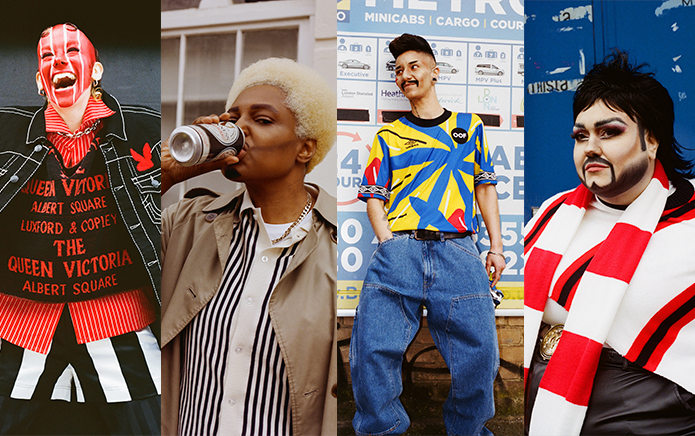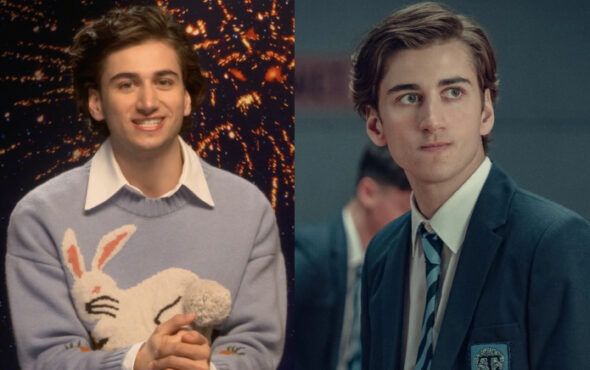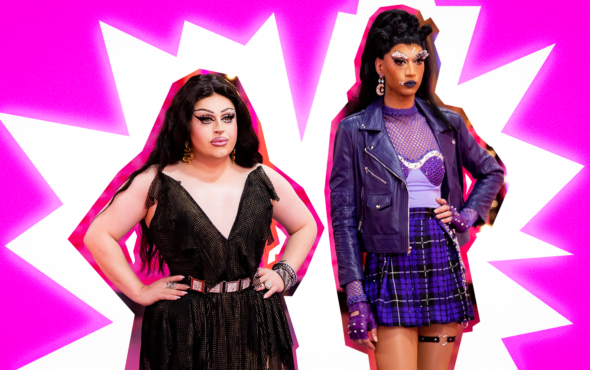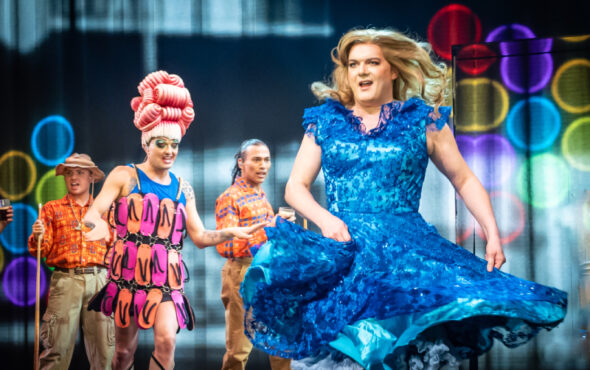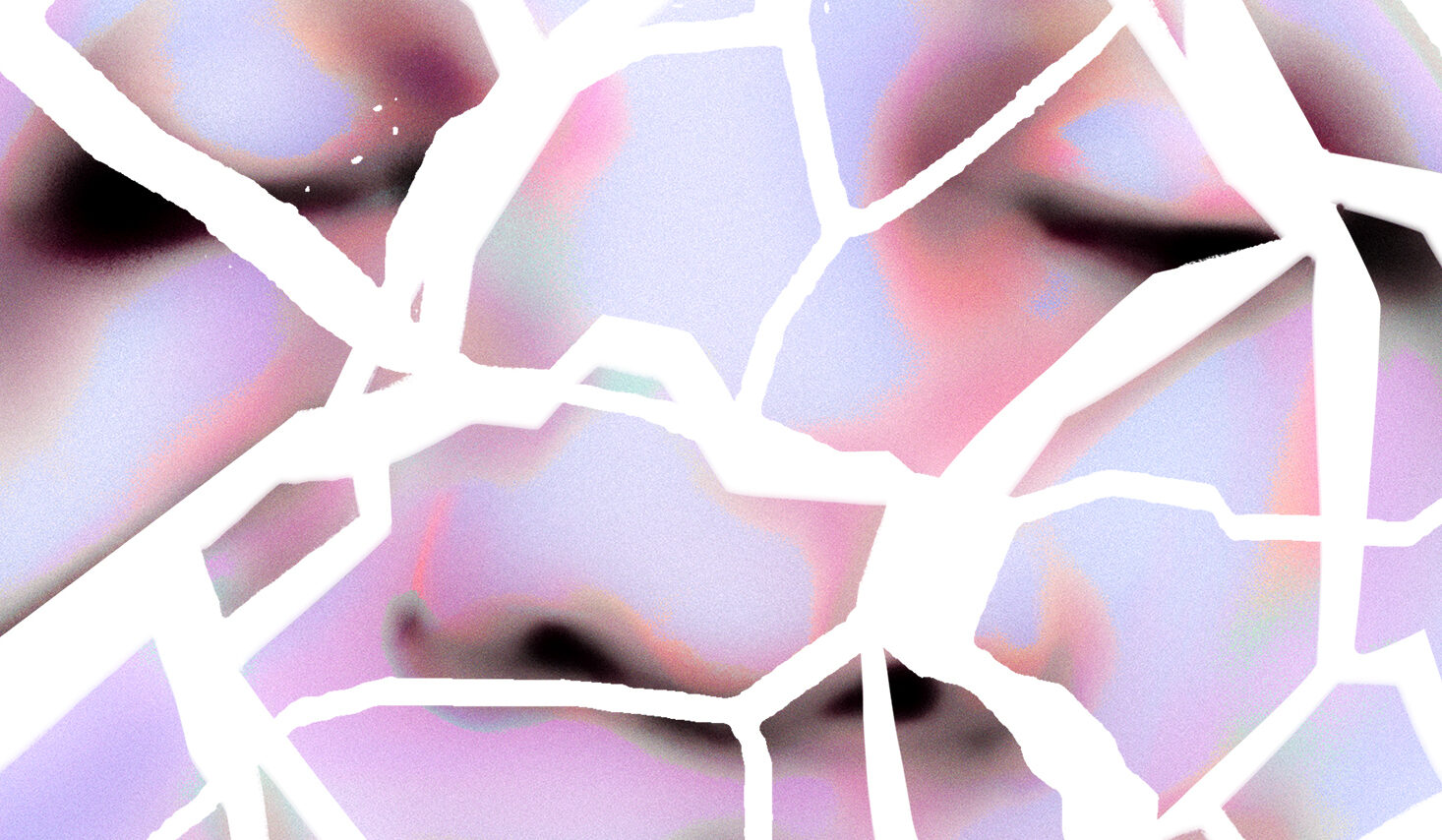
TW: eating disorders. Please be advised that the following content may be triggering for individuals who have or are currently struggling with eating disorders. This warning is intended to acknowledge that disordered eating behaviours, body image distress, calorie counting, control over food consumption, weight loss, purging, and other aspects linked to eating disorders will be discussed. If you are currently in recovery, sensitive to these topics, or feel that this content may negatively impact your mental well-being, we encourage you to avoid reading further. It is crucial to prioritise your mental health and seek support from professionals or trusted individuals if needed.
The emphasis on body image has always played a big role in the queer community, and especially amongst gay and bisexual men. In fictional media, advertisements and porn, particular body types have been championed above others. Even this very magazine has, in the past, played a part in perpetuating the idea that certain body types are more desirable than others with a string of covers featuring scantily clad, oiled and toned men throughout the 2000s and 2010s.
These cultural archetypes have real-life consequences and studies have found that there’s a prevalence of eating disorders and compulsive gym use amongst gay and bisexual men. In a research article from 2022, German academics found that gay men exhibited greater body image issues than their straight counterparts, in particular, “a greater discrepancy between self-rated current and ideal body fat” and “higher drive for thinness”.
“A lot of the bullying I received was based on the way that I looked”
The underlying causes of eating disorders are varied and complex – but, for some, the roots are laid early. James has lived with anorexia and bulimia since he was at school, believing that the condition was triggered when he experienced bullying and struggled to make friends. “A lot of the bullying I received was based on the way that I looked – I had grown before everyone else and was very tall and thin with glasses and long hair. I didn’t fit in, in many ways I stood out,” he explains. “I internalised really strongly that the way we look matters and that it was bad to stand out or be different. I tried to change my appearance to fit in more, but became very fixated on my body image, weight and shape. I started to use food to almost shut down my body so that I didn’t have to register the difficult feelings I had, and to try and disappear.”
James feels that the desire to fit in and to be desirable to others is hard-wired into us all on an evolutionary level, and feels that this has a part to play in why the prevalence of eating disorders is so high amongst gay and bisexual men. “I learnt from my own experience that social survival is as important as physical survival, and when society holds up ideals about how we should behave and what we should look like, these are hard to resist following, even if they are unrealistic,” James adds.
“As someone who has had to work really hard in my recovery on rejecting the idea of the ‘perfect body’, I have found it difficult when I have experienced how parts of the queer community freely judge the bodies of others and can be very image-focussed. The sad truth in my experience is that the way others respond to you is still too often based on the way you look, especially when it comes to dating and hook-up culture.”
While dating apps and porn are reflections, rather than the cause, of society’s body standards, they can be spaces where ongoing biases are confirmed rather than deconstructed. Some dating apps used within the queer community still offer the option for filtering prospective hookups by body types such as stocky”, “slim”, “muscular” and “large” – allowing users to disregard large swathes of the community with a single click.
Similarly, while tube sites and platformers like JustForFans and OnlyFans host content by a broad range of performers, many of the most popular videos and creators are those featuring a specific physique: thin, toned, and with muscles cultivated through long sessions at the gym. The fact that these types of porn actors are the most popular – while diverse body types are seen as a niche, or a fetish – only reinforces the idea that certain physiques are more valued than others.
“Bulimia allowed me to feel acceptance when people would comment on my weight loss”
Like James, Sunni’s first experience with an eating disorder was at school. After being in recovery from bulimia for 20 years, the condition returned in 2022 and he’s since been working on his recovery. For him, part of what sustained his eating disorder was the positive reinforcement that peers would provide. “[Bulimia] allowed me to feel acceptance when people would comment on my weight loss,” he says. Sunni also battles severe BDD (Body Dysmorphic Disorder), and feels like a preoccupation with physical attractiveness in the queer community has exacerbated this. “You don’t have to go far, be it on apps, social media or a gay space to find men flaunting their body and getting attention,” he says. “This feeds the notion that body image is directly correlated with attractiveness, acceptance and attention – especially in a world where you can feel incredibly lonely.”
But beyond body standards and dating apps, is there any further psychological basis for the prevalence of eating disorders among queer communities? Registered psychologist Dr Glenn Mason, whose specialisms include LGBTQIA+ mental health, argues that there are multiple factors at play. “It’s imperative to remember that eating difficulties can affect anyone no matter what their gender or sexual identity is,” he says. “However research does suggest it is higher within LGBTQ+ communities than heterosexual and cisgender populations. This can be due to many reasons such as increased levels of stress, discrimination, violence, bullying and social isolation.”
Despite the awareness within the LGBTQIA+ community that eating disorders are common, most media broaching the subject features cis, straight women – creating a ‘type’ that queer men don’t always conform to, arguably making it harder for them to reach out. But when they do make the first step, the results can be disappointing due to a lack of culturally-competent mental health treatment or service providers. “We know from research that there are many barriers LGBTQ+ people can experience when trying to access services,” Mason says.“More research needs to be conducted with specific gender and sexual identities so we can better understand how best to support those within the community experiencing eating difficulties.”
“The biggest barriers to getting help were the fact that I saw nobody like me who had similar experiences”
While change is urgently needed from mainstream mental health practitioners, we can slowly challenge stereotypes about eating disorders and who is affected all on our own. This is the approach James is taking, after noting that the people he spoke to about his struggles in school lacked both the knowledge and understanding to effectively help him. Now, in addition to continuing work on his recovery, he’s committed to spreading awareness in order to help others.
“When I started to struggle, the biggest barriers to getting help were the fact that I saw nobody like me who had similar experiences,” he says. “Being confident to talk about food, eating and body image in a compassionate way will help those who think they are struggling to open up without fear of judgement or shame. That could be the start of a journey towards getting help and recovery, which is something that everyone deserves.”
View this post on Instagram
Formal support for those grappling with eating disorders includes services such as the eating disorder charity Beat, as well as the mental health charity Mind – both of whom provide additional information and regular helplines for anyone who is struggling. However, some individuals may prefer a service which is tailored to the queer experience, which is where charities like health and wellbeing organisation LGBT HERO come in. Like James, LGBT HERO’s CEO Ian Howley is keen to encourage change through education and open discourse. “We need to be better about opening up and talking about how life affects our communities, how it affects you, me and all of us and maybe by having those conversations we can challenge some the stigmas surrounding eating disorders,” he says.
For those who might recognise themselves or someone they know within this story, Howley encourages individuals to break the silence: “If someone is living with an eating disorder, it’s important that you recognise it for what it is, do not feel any shame about it, and know that you are not alone,” he says. “Whether it’s talking to a trusted friend, family member, colleague or random person on the internet, it could be your first step to taking control.”
If you suspect that you are struggling with your mental health, you should book an appointment with your GP to discuss potential treatment plans and support. For shorter-term treatment plans, eating disorder charity Beat offers a free, confidential helpline 365 days a year for anyone looking to explore feelings related to an eating disorder (you don’t need a formal diagnosis). They also offer a one-to-one webchat and a “helpfinder” tool on their website that allows you to search for support services in your catchment area.
This interview is taken from the January 2024 issue of GAY TIMES. Head to Apple News + for more exclusive features and interviews from the issue.
